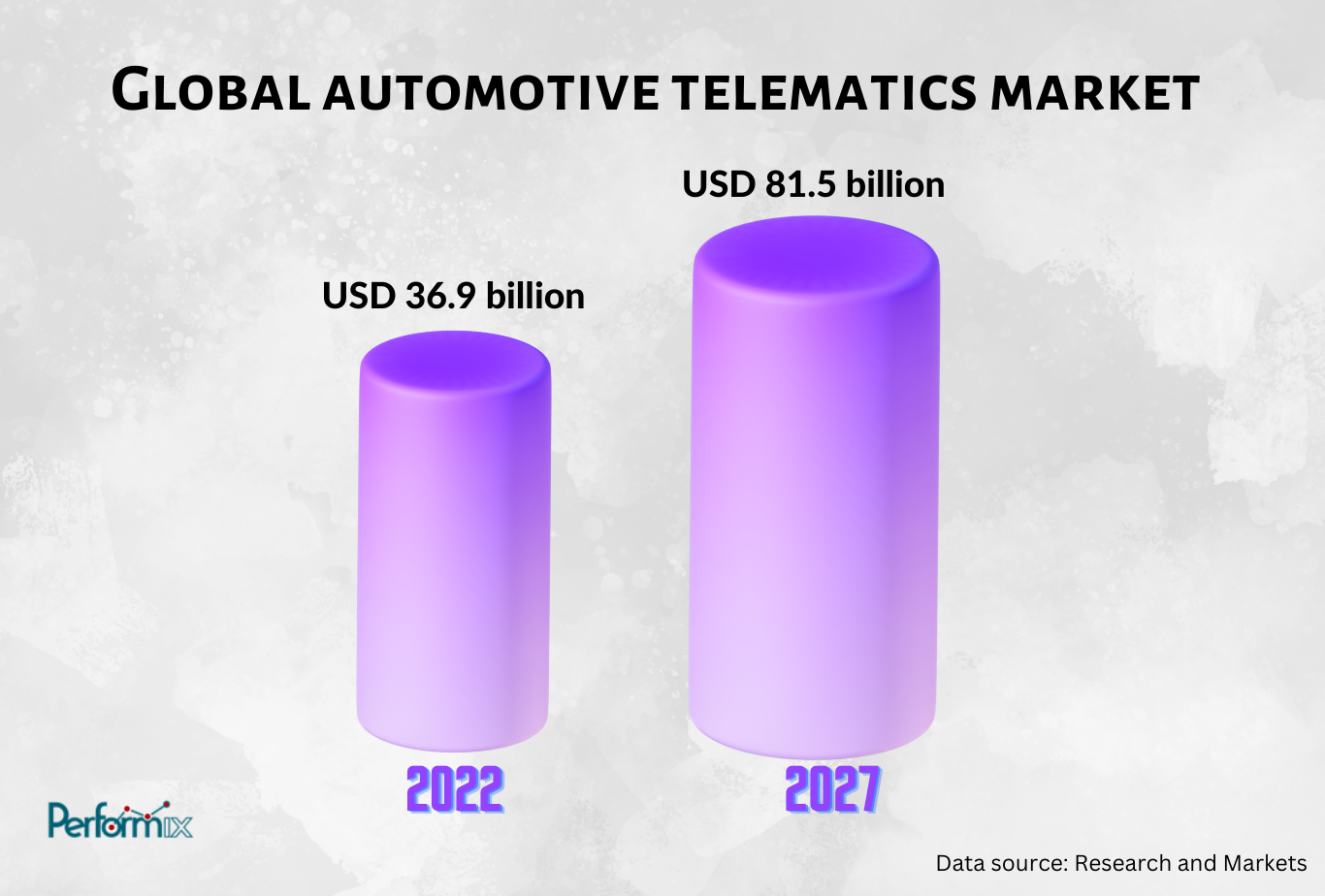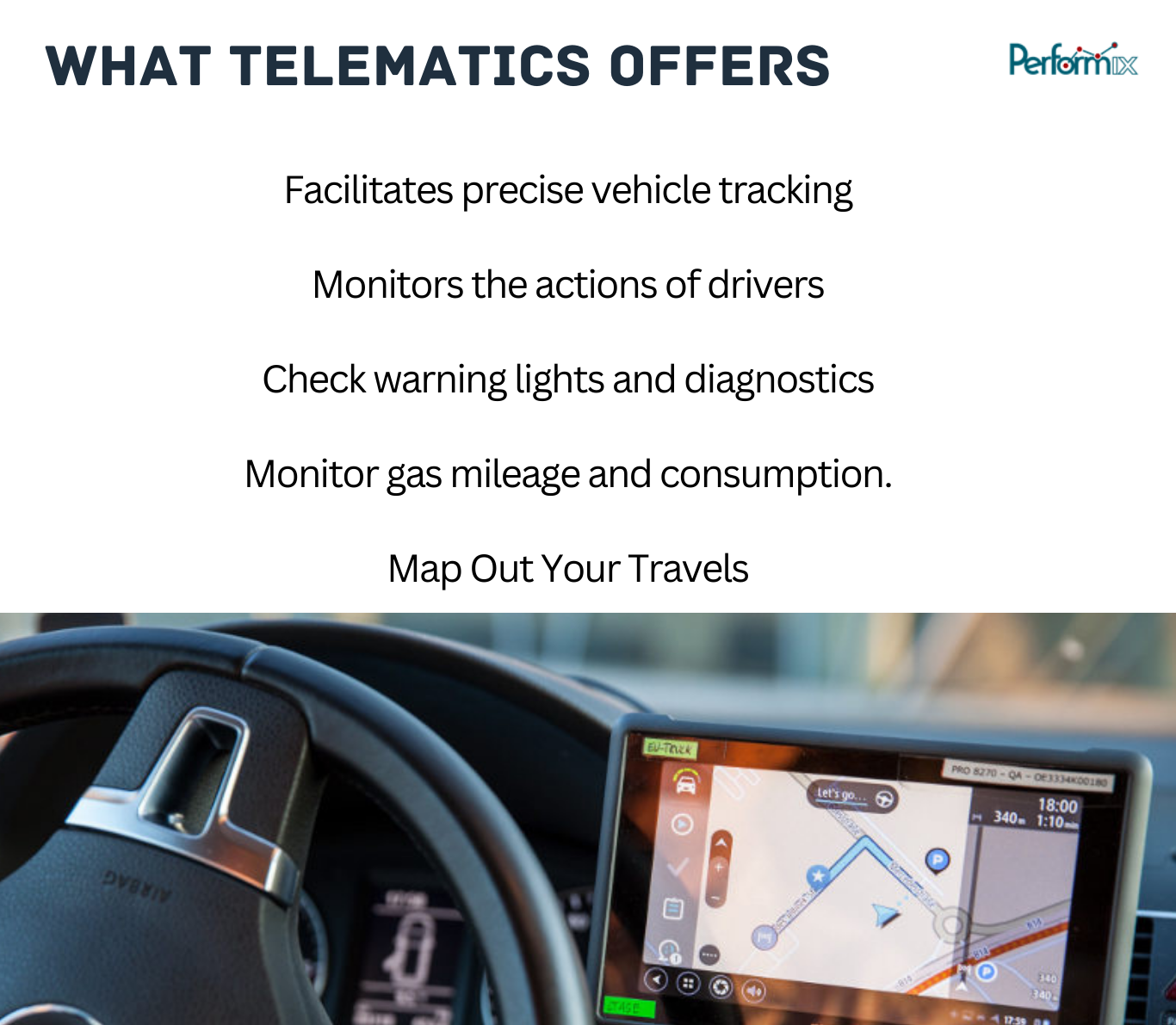The Trending Telematics
The transportation sector has been in turmoil since the introduction of autonomous vehicles, causing widespread flux and the need for substantial adjustments to current fleet management practices. For instance, improved resource utilization of automated cars can cut costs by lowering fuel consumption while negatively affecting productivity. As a result of this effectiveness, you can maximize the use of your fleet. The flip side of this coin is the increasing need for vehicle data, which is required to manage day-to-day operations better. Fleet managers can use this data to produce considerable operational efficiencies as telematics technology becomes more affordable and accessible.
Telematics is a commercial trend expected to snowball in the coming years. Most notably, using this at your firm can help you save fuel money while facilitating better communication among your fleet’s members.
Do you know
From an anticipated USD 36.9 billion in 2022, the automotive telematics market will grow at a CAGR of 17.2% to reach USD 81.5 billion by 2027.

What is Telematics?
Telematics is the seamless incorporation of the automobile into the modern information age, and the convergence of location technology, wireless communications, and in-vehicle electronics characterizes it.
It’s important to remember that this technology is a product of collaboration across many different types of experts and organizational divisions, including IT, production, networking, engineering, software, and hardware.
To sum it up, telematics is an all-encompassing system that gathers valuable data to give you insights, knowledge, and assistance to enhance your fleet management activities.
Data from Telematics
The proliferation of smartphones has led to the integration of previously disparate data sets, such as information about engines, car problems, and gas mileage. For this reason, it applies to equipment managers and fleet managers.
It’s vital to note that telematics requires some technological component in the automobile itself. This data often consists of velocity, fuel economy, geography, driver hours worked, asset tracking, and route optimization.
GPS trackers with regular SIM cards are connected to a vehicle’s onboard diagnostics port. A modem assembles, sending the collected information across a wireless network to the central server.
The device gathers tracking information by connecting to a vehicle’s onboard computer through GPS. Also, the navigation system data is sent from the technology on board to the fleet tracking system, usually at the company’s headquarters, through a communication link. Finally, assuming you’re employing an effective fleet management solution, the data is recorded and displayed to be studied and appraised to improve fleet procedures.
So, what exactly does telematics systems record?
The promise of telematics lies in the detailed information it provides, like,
Accurate coordinates
The global positioning system (GPS) data include time, speed, and direction.
Details of the Trip
Details like how long you were at a job site, how often you were in motion, how far you went, how fast you went, and how closely you stuck to your itinerary.
Status information
Turning the key on and off, the battery’s charge, the vehicle’s speed, the amount of gas left, the amount of gas used, sudden acceleration, and sudden stopping.
EV (Electric Vehicle) status
It gets information about the vehicle’s health, the voltage and amount of time left to charge the battery, the distance traveled by the EV, and the amount of energy recovered from regenerative braking.
Information on the Driver
Information such as the driver’s name and license number, the VIN, the truck’s speed as measured by the wheels, the cruise control setting, the position of the accelerator pedal, the weight on the truck’s axles, and the status of the brake switch.
Maintenance data
Vehicle upkeep information includes OBD issue codes, failure category details, status reports, PIDs, and ECU data.

IoT devices (sensor technologies) have become increasingly affordable, which means the possibilities for the types of telematics data that are gathered have significantly expanded.
However, telematics software is also required to use the hardware and interpret the data.
After being encrypted, the data from the vehicles are sent to telematics fleet management software for further analysis and business intelligence gathering. A fleet management app can use standard (statistical) big data analytics methods or be configured to generate predictive insights with machine learning.
Is a custom-made fleet app something you’d like to develop for your transportation business? So, how’s this for it?
Set up a free Discovery Call with Performix and take it further.
Are you curious about the value of telematics and whether or not it is a promising investment?
Many businesses are enforcing telematics systems as a practical means of improving fleet management. Telematics solutions provide several benefits, including those related to worker safety and the reduction of administrative costs. Businesses are increasingly interested in implementing telematics since it helps them monitor progress and spot areas for development.
Now, let’s examine the enhancements businesses can make using telematics.
Do you know
Latest models from General Motors, BMW, Mercedes-Benz, Hyundai, Volkswagen, FCA Group, Volvo, Toyota/Lexus, Renault, and Tesla all feature inbuilt telematics. Some manufacturers rely heavily on telemetry services to grow their ancillary businesses, like ridesharing and usage-based insurance (UBI).
Improves Security
Safety is a critical responsibility for fleet managers. Companies now have a responsibility to look out for their workers’ health and safety on the job, and telematics helps them do that when it comes to their lone and remote workers who might be in danger.
It is critical that fleet managers rapidly check in on their staff in the event of an emergency. Using a telematics system that integrates with a business’s other IT infrastructure and automatically notifies the appropriate people in the event of an emergency is a simple task.
Telematics also enables businesses to monitor and compare driver performance against industry standards, improving safety in hazardous occupations.
Last but not least, lone worker duress devices enable employees working alone in high-risk roles to send alerts covertly, allowing them to call for help without escalating a potentially dangerous situation.
Save Money on Gas
Telematics can help you save money on gas by reducing your fleet’s overall usage. Compared to more conservative drivers, aggressive drivers use 10.9% more gas on average, while more seasoned motorists can save up to 30%. By monitoring the driving patterns of their fleets, businesses may pinpoint the primary causes of their high operating expenses and inefficient procedures.
Fleet route optimization is another cost-saving strategy for businesses. When inefficient routes are uncovered, closer-to-home trucks are sent out to complete them, thereby improving staff productivity while saving costs.
Do you know
The market size for truck telematics is foreseen to reach $2,930.3 million by 2031, expanding at a CAGR of 2.9% between 2023 and 2031.

Reduces maintenance expenses
Maintenance costs could add up quickly if your fleet has problems or isn’t serviced as often as it should be. However, these expenses can be avoided or significantly reduced with proactive upkeep. Predicting fleet maintenance costs is an excellent way to save money, and businesses use telematics to track how their vehicles are used and find out when they need to be serviced. The real-time data from monitoring vehicle mileage is valuable to fleet managers, allowing them to schedule maintenance and repairs ahead of time to save money. In the long run, savings can be acknowledged due to fewer vehicles experiencing unforeseen problems.
Aside from the financial savings, preventative maintenance also increases driver and fleet safety. By performing routine maintenance on your vehicle, such as checking the tire pressure once a month, you can improve your fuel efficiency by 3 percent. Similarly, changing your oil every 5,000 miles can increase fuel efficiency by 1 to 2 percent.
Reduce Insurance Premiums
Businesses that own non-powered assets and want to cut expenses by self-insuring or improve the possibility of asset recovery by lowering insurance premiums and excess are increasingly turning to telematics systems.
To accomplish this, you can:
1. Avoid theft of low-value equipment by monitoring. Even though insurance might not be worth it in this case, the possible financial and operational losses from theft still need to be made up for or reduced.
2. Boost the success rate of reclaiming stolen vehicles and other assets. Companies can save money on insurance premiums and boost the likelihood of a swift recovery by using non-powered asset tracking as self-insurance.
Enhance Productivity
By adding a telematics system to the company, fleet managers will have access to helpful information. Keeping track of the hours drivers work, the routes they take, and how they act gives the organization a way to get feedback on how to improve.
Fleet Managers are not immune to the trend toward embracing innovative approaches to employee engagement, such as those based on gaming. The application of gamification has been demonstrated to increase safe driving practices by 50% and reduce fleet accidents by 84%. The creation of fleet driver performance leaderboards can improve safety and help employees better connect their goals with the organizations.
Even though telematics is a new industry that has only been around for a short period, it will surely grow and improve as technology does the same. We may see more ground-breaking innovations in the field of “big data,” which could greatly affect the future of telematics. Remember that fleet tracking and management can play a more substantial role in the IoT as technological marvels like self-driving automobiles are deployed.
The advent of fleet tracking has been a watershed moment for fleet security and productivity, notably in the automotive industry. And as it gathers steam, you should keep an eye on a few new technological developments. You are aware that data is the backbone of any reliable telematics system. However, it might be challenging to make sense of that data and put it into practice.
In light of the need to sort through mountains of data, GPS tracking and management services providers should offer their clients intelligent tools for doing so, and perhaps even cloud storage for storing and organizing the resulting data.
With growing networks like 5G and other technologies, it’s essential to admit that autonomous vehicles equipped with modern telematics can drastically cut expenses, streamline routine chores, and extend the span of automobiles.







